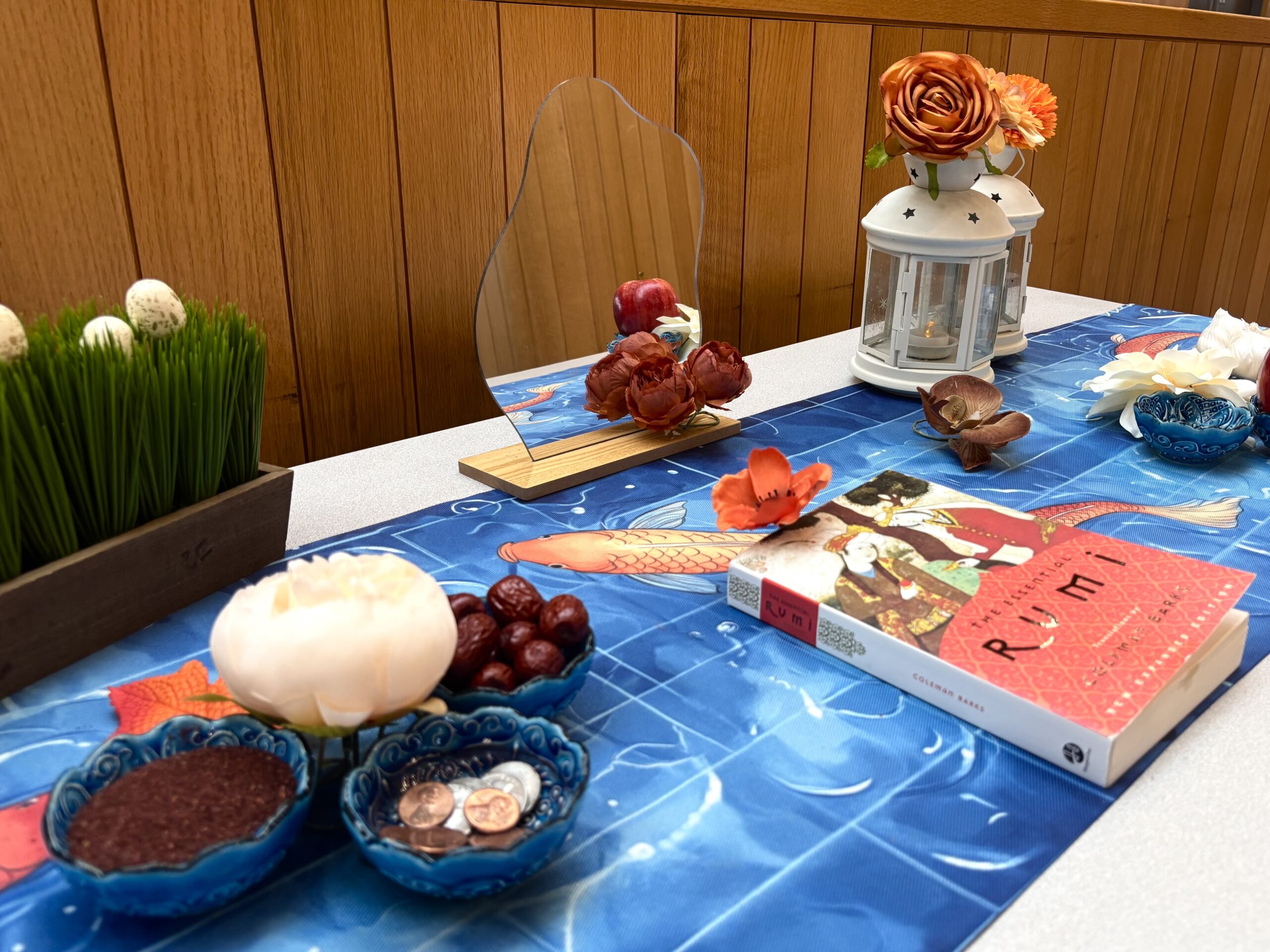“A new day at Yale”: Nowruz celebration unites Central Asian, Iranian and Middle Eastern Communities
In a burst of spring color and song, nearly 200 members of the Yale and New Haven communities gathered to celebrate the Persian New Year.

Baala Shakya, Staff Photographer
On Saturday, nearly 200 students, faculty and visitors packed into Kroon Hall for Yale’s second annual Nowruz celebration — a vibrant, high-spirited festival marking the Persian New Year and the arrival of spring.
Hosted by Asian Crossroads at Yale, the Office of International Students and Scholars and the Persian Students Association, this year’s event transformed Kroon into a kaleidoscope of color, sound and culture, uniting Yale’s Central Asian, Iranian and Middle Eastern communities — and drawing students from beyond New Haven.
Nowruz — meaning “New Day” in Persian — is celebrated across a vast swath of the world, from Iran and Afghanistan to the Caucasus, Central Asia, South Asia and parts of Eastern Europe and the Balkans. For Umid Usmanov ’26, co-founder of Asian Crossroads at Yale, bringing Nowruz to Yale meant far more than just celebrating tradition — it meant creating home.
“Hosting Nowruz was incredibly meaningful to me,” Usmanov said. “It felt like bringing a piece of home to a place that, while intellectually stimulating, often felt very far from where I was raised.”
Growing up in Uzbekistan, Usmanov remembers Nowruz as a time of community and warmth — extended family gathering to cook plov and sumalak, children flying kites in the courtyard, elders telling stories over green tea.
But as an international student at Yale, the absence of those rituals became a source of homesickness — and inspiration.
“That homesickness, especially during my first year at Yale, was the driving force behind founding Asian Crossroads,” Usmanov explained. “Together with my good friend and co-founder Jed Devillers, we started the group to fill a two-fold gap on campus: representation and understanding.”
Saturday’s event reflected that vision. Live performances spanned the region’s artistic traditions: a tar solo by an Iranian musician, a set by Kyrgyz singer Aidai and a dynamic folk dance by Datkayim, a Kyrgyz troupe specializing in traditional choreography. Tables overflowed with regional delicacies — including plov and sumalak — offering attendees a taste of home or, for many, a first encounter with Central Asian cuisine.
Yet the impact of Nowruz at Yale extended far beyond its performances or food.
For Diana Zhumalieva, a Kyrgyz graduate of Wesleyan University and a graduate intern at the OISS, the celebration stirred powerful memories of home and of childhood rituals she longed to recreate.
“Growing up, Nowruz was my favorite celebration,” Zhumalieva reflected. “We woke up early, deep-cleaned the house, and my mother would burn a small branch of evergreen pine on a plate and go from corner to corner, letting the smoke cleanse our house from bad spirits and energy.” For her, Nowruz was about generosity, forgiveness and letting go of negativity — entering the new year with a new soul.
After years of celebrating Nowruz alone in the United States, Zhumalieva said Yale’s event offered something rare: belonging.
“In the last five years, I didn’t have a chance to do Nowruz in a big community,” she told the crowd gathered at Kroon Hall. “But today, as I look at all of you coming together to celebrate Nowruz, I am filled with joy and gratitude.”
The feeling of forging community in diaspora resonates far beyond Yale. Across the Ivy League, the recent growth of Central Asian student populations has led to a surge of cultural organizing.
At Brown University, Komron Aripov, a senior and founder of Central Asian Students @ Brown, noted the changing demographics on campuses like his own.
“In my year, I’m the only Uzbek as a senior,” Aripov said. “But now, we’re finally at the point where there’s critical mass to start a club. It’s such a large region of the world, but there’s so little representation.”
Similarly, at NYU, sophomore Meruyet Tailanova founded the Central Asian Hub this semester to connect students from Kazakhstan, Kyrgyzstan, Uzbekistan and beyond.
“I just remember my freshman year, searching for Kazakhs — just to feel like I fit in,” Tailanova told the News. “Nowruz is such a big thing in Kazakhstan. I came all the way from New York to Yale just to see other Central Asians, eat good food and celebrate together.”
Their visit to Yale’s Nowruz celebration, Tailanova added, was a reminder of what student organizing can make possible: “It’s not just about Central Asians; it’s about sharing our culture with everyone.”
For Usmanov, that longing for connection — and for cultural visibility — is what gives Nowruz its enduring power.
“[Nowruz] symbolizes renewal, growth and new beginnings,” Usmanov said. “Nowruz reminds us that no matter how long the winter, spring always returns, bringing with it hope, resilience and the chance to begin again.”
Saturday’s celebration was also made possible with the support of numerous campus partners, including the Asian American Cultural Center, the Middle Eastern and North African Cultural Center, the Central Asia Initiative at the MacMillan Center and the School of the Environment’s Asia Student Interest Group.
The Central Asia Initiative was launched by Yale’s MacMillan Center in 2024.







